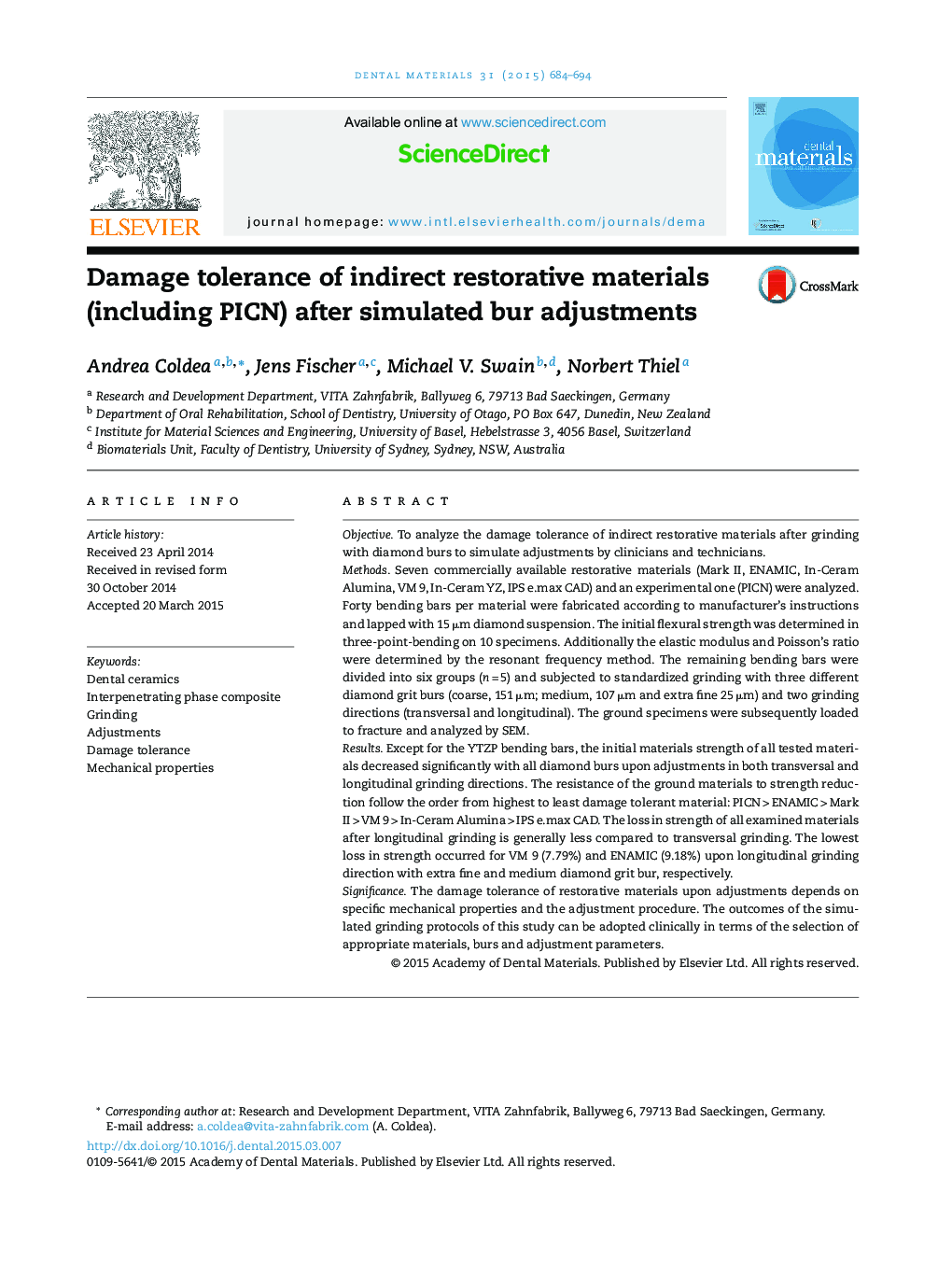| کد مقاله | کد نشریه | سال انتشار | مقاله انگلیسی | نسخه تمام متن |
|---|---|---|---|---|
| 1420662 | 986378 | 2015 | 11 صفحه PDF | دانلود رایگان |

• The damage tolerance of dental restorative materials was analyzed.
• Grinding with diamond burs to simulate adjustments was applied.
• The initial materials strength of all tested materials decreased significantly.
• The novel interpenetrating and polymer containing composites ENAMIC and PICN exhibit a high damage tolerance upon typical clinical bur grinding procedures.
ObjectiveTo analyze the damage tolerance of indirect restorative materials after grinding with diamond burs to simulate adjustments by clinicians and technicians.MethodsSeven commercially available restorative materials (Mark II, ENAMIC, In-Ceram Alumina, VM 9, In-Ceram YZ, IPS e.max CAD) and an experimental one (PICN) were analyzed. Forty bending bars per material were fabricated according to manufacturer's instructions and lapped with 15 μm diamond suspension. The initial flexural strength was determined in three-point-bending on 10 specimens. Additionally the elastic modulus and Poisson's ratio were determined by the resonant frequency method. The remaining bending bars were divided into six groups (n = 5) and subjected to standardized grinding with three different diamond grit burs (coarse, 151 μm; medium, 107 μm and extra fine 25 μm) and two grinding directions (transversal and longitudinal). The ground specimens were subsequently loaded to fracture and analyzed by SEM.ResultsExcept for the YTZP bending bars, the initial materials strength of all tested materials decreased significantly with all diamond burs upon adjustments in both transversal and longitudinal grinding directions. The resistance of the ground materials to strength reduction follow the order from highest to least damage tolerant material: PICN > ENAMIC > Mark II > VM 9 > In-Ceram Alumina > IPS e.max CAD. The loss in strength of all examined materials after longitudinal grinding is generally less compared to transversal grinding. The lowest loss in strength occurred for VM 9 (7.79%) and ENAMIC (9.18%) upon longitudinal grinding direction with extra fine and medium diamond grit bur, respectively.SignificanceThe damage tolerance of restorative materials upon adjustments depends on specific mechanical properties and the adjustment procedure. The outcomes of the simulated grinding protocols of this study can be adopted clinically in terms of the selection of appropriate materials, burs and adjustment parameters.
Journal: Dental Materials - Volume 31, Issue 6, June 2015, Pages 684–694